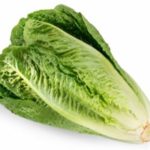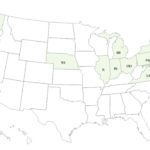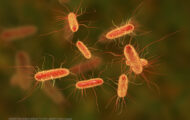The FDA has released a report detailing their investigation into three fall 2019 romaine E. coli O157:H7 outbreaks that sickened at least 188 people. That agency worked with the FDA and state officials to investigation how the romaine lettuce was contaminated. The romaine E. coli O157:H7 outbreaks began in September 2019 and were declared over in January 2020. Some clusters within each of these outbreaks were traced to a common grower with multiple ranches and fields in the Salinas, California growing region. That grower was not named. Investigators found one of the outbreak strains of E. coli O157:H7 in a sample taken from public land less than two miles upslope from a produce farm with multiple fields that was identified during traceback investigations. Other Shiga … [Read more...]
Safer Food Choices For People At Risk For Food Poisoning Complications
People who are at risk for serious compilations from food poisoning need to be careful about the food they buy and how it is prepared, as well as staying vigilant about food recalls and food outbreak notices. But there are other ways to protect yourself if you fall into a high risk category for food poisoning. There are safer food choices to make at the grocery store. For instance, at the deli, avoid purchasing cold smoked fish or products that contain cold smoked fish. In addition, do not choose sashimi, sushi, or ceviche, since those products use raw or undercooked fish or shellfish. Instead, choose canned fish or seafood, and seafood that has been cooked to a minimum final internal temperature of 145°F. Do not buy unpasteurized (raw) milk, unpasteurized fruit juices, or raw … [Read more...]
FDA Comments on Deadly E. coli O157:H7 HUS Outbreak Linked to Leafy Greens
The deadly E. coli O157:H7 HUS outbreak that was linked to leafy greens is over, according to the CDC. The FDA has announced information about its investigation into this multistate outbreak. The last person to report an illness to public health officials got sick on December 12, 2017. That indicates that the food that was causing this illness is not longer available in consumers' homes or in the marketplace. Officials think that leafy greens caused this outbreak. That product has a relatively short shelf life. The FDA is still investigating this outbreak, since officials did not determine a specific product, where the product was sold, or who produced the product that caused this outbreak. No common link between patients has been identified, although leafy greens seem to be the … [Read more...]
Deadly E. coli O157:H7 HUS Outbreak Linked to Leafy Greens Over, Says CDC
The deadly E. coli O157:H7 HUS outbreak in many states that is linked to leafy green is over, according to the CDC. In all, 25 people in 15 states were sickened with the outbreak strain of deadly bacteria. The most recent illness started on December 12, 2017. Illnesses started on dates ranging from November 5, 2017 to December 12, 2017. Nine people were hospitalized, including two who developed hemolytic uremic syndrome (HUS), a type of kidney failure. One person in California died. This outbreak investigation began in Canada, when people sickened with the same strain of E. coli bacteria were reported in several provinces. In that country, this outbreak was linked to romaine lettuce. The U.S. government failed to identify a specific product linked to this outbreak, but … [Read more...]
CDC Updates Deadly E. coli O157:H7 HUS Outbreak Associated with Leafy Greens; Romaine?
The deadly E. coli O157:H7 HUS outbreak in the United States that is associated with leafy greens and may be linked to romaine lettuce has been updated by the Centers for Disease Control and Prevention. The CDC, fifteen states, and the FDA are investigating the outbreak. As of January 10, 2018, 24 people are sick. That's an increase of seven illnesses since the initial report of the outbreak on December 28, 2017. The last reported illness started on December 12, 2017. The case count by state is: California (4), Connecticut (2), Illinois (1), Indiana (2), Maryland (3), Michigan (1), Nebraska (1), New Hampshire (2), New Jersey (1), New York (1), Ohio (1), Pennsylvania (2), Vermont (1), Virginia (1), and Washington (1). Illnesses began on dates ranging from November 15, 2017 to … [Read more...]
Damaged Salad Leaves Massively Stimulate Salmonella Growth
A study published this month in Applied and Environmental Microbiology, conducted at the University of Leicester, shows that juices from damaged salad leaves "massively" stimulate Salmonella growth. In fact, that lab study shows that those juices increase Salmonella growth 2,400 fold over a control group. The leached juices also increased the bacteria's ability to form a strong, wash-resistant attachment to salad leaves and they enhance the pathogen's virulence, increasing its ability to cause illness. This is all bad news for bagged salad lovers. Between 2000 and 2007 in the United States, there were 38 Salmonella outbreaks associated with leafy greens that sickened 1,409 people. Leafy greens and Salmonella as a produce-pathogen pair is the second most common risk for outbreaks. … [Read more...]
E. coli O157:H7 on Leafy Greens? It’s the Cows
Most people are surprised when a food poisoning outbreak is linked to leafy greens. Fresh vegetables are not the foods we think of in relation to foodborne illness. But the fact remains that leafy greens are the most common vector for delivering pathogenic bacteria to humans. Bacteria get onto leafy greens and other produce in several ways. They can be contaminated in the field by feces from birds and other animals. They can be contaminated in the field by poor worker hygiene. They can be contaminated in transport in dirty containers and trucks. They can be contaminated during processing if a facility doesn't keep animals out, or if workers are sick. But there is one means of contamination that may be most troublesome: location of a farm field next to a cattle feedlot, as a study … [Read more...]













